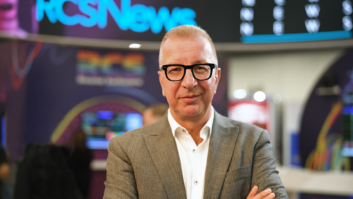
Tripp Eldredge Radio audio streams should be real money-makers for broadcasters, because their listeners are the station’s most loyal fans — or so goes the logic.
Kathleen Bricketto, Beasley Broadcast Group vice president of interactive, equates this kind of listener to a diehard football fan.
“(They) are the 70,000 people who reach into their pockets to buy season tickets,” Bricketto said. To not market to these faithful listeners, she said, “directly is akin to the Miami Dolphins releasing a Dan Marino retro team jersey, and not marketing to fans inside the Sun Life Stadium at game time.”
Despite promises of enormous potential, however, radio stations are finding it hard to sell ad space on their audio streams.
Michael Theodore, Internet Advertising Bureau’s vice president of training and development, will moderate a session at the fall Radio Show on Sept. 19 called “Digital Autopsy: What’s Hot and What’s Not,” exploring various digital initiatives.
He said advertisers don’t always feel confident that they’ll get a full return for what they pay.
“Radio broadcasting has always been a medium that is over-indexed, yet underspent on ad dollars,” Theodore said. “This is even more true with radio audio streams. Advertisers often feel they don’t have the measurements they demand to justify putting money into radio streams — even though the listenership and the value are there.”
Along with Bricketto the digital panel will feature Tripp Eldredge, president and CEO of dmr; Deb Esayian, Emmis Interactive co-president; and James Bottorff, Bonneville Seattle’s director of digital media.
Conundrum
While stations offer rebroadcasts of their on-air content, Bricketto again emphasizes how committed listeners must be to seek out the audio-on-demand repeats and Web-only audio features available on station websites.
“They are like people who are repeat customers at a car dealership,” she said. “They are not just customers. These are people who have made your product a part of their lives.”
Such people are “the 10 percent who drive nearly half of your listening,” said Eldredge. “They likely belong to your station’s Facebook page and promote you to their friends and family. These are your most loyal fans, and their loyalty is a unique value to advertisers. These are the consumers who will actively choose products that are sold on your station, to show their support for you.”
So if streaming listeners are uniquely valuable to a station, the task is not just to convince advertisers to start selling, but also to educate radio managers on how to sell.
One way to make this point is by highlighting the value of local radio as an endorsement medium.
“The endorsement made to loyal listeners by on-air staff is one of the earliest forms of social networking,” said Bricketto. The power of such endorsements over radio streams is magnified, because the on-air talent essentially is preaching to the choir.

Michael Theodore When your sales rep goes out to sell your audio streams, the last thing he or she should do is make them a free add-on to over-the-air advertising, Bricketto said. “Streaming offers real value to advertisers, and that value should and can be monetized.”
Hot/not
The session will delve into other digital possibilities and difficulties for radio broadcasters, not just streaming.
Michael Theodore said one of those possibilities is having brands sponsor specific parts of the streaming website, as exemplified by the website of Spotify. “Radio stations should emphasize the value of audio streams in terms of the quality of listeners reached, rather than the click-through rates achieved,” he said.
Theodore also points to Clear Channel’s success with its iHeartRadio.com content aggregation site, a force to reckon with in the growing digital market. “Broadcasters will have to decide whether to go head-to-head with this 800-pound gorilla on their own, or to team up with other broadcasters in order to compete.”
Eldredge is thinking about targeted selectivity toward audience members, and what this could mean in the future of broadcast. “In the analog broadcast world where numbers were everything, all listeners were essentially the same,” he said. “But in the digital world, we can really identify and find the very people our advertisers are trying to reach — and as a result we can deliver a much better result to them.”
As for Bricketto, she’s focused on realizing the money-making potential of streamed radio audio, and helping broadcasters to profit right now. “Going forward, training is key for all sales managers,” Bricketto said. “Streaming audio is a powerful medium, a fifth daypart that all broadcasters need to believe in and turn to their advantage.”












